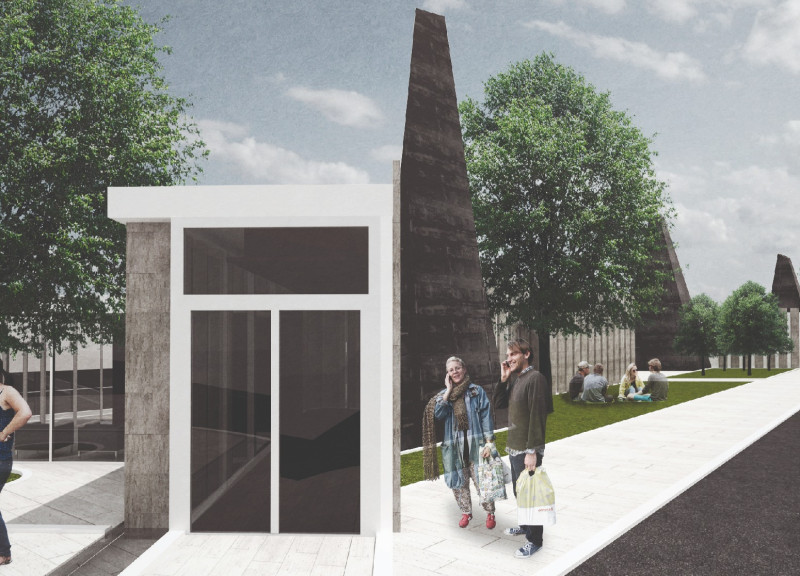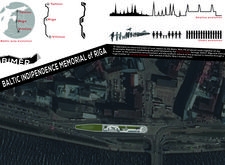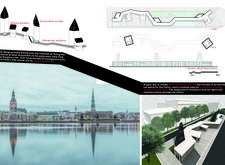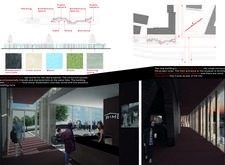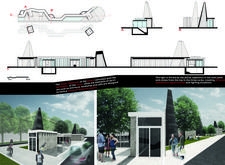5 key facts about this project
### Project Overview
The Baltic Independence Memorial in Riga is an architectural homage to the Baltic Way, a peaceful demonstration in 1989 where citizens from the Baltic states formed a human chain to assert their solidarity for independence. Positioned along the Daugava River, the memorial aims to reflect the historical significance of the event while fostering a sense of community and remembrance within the capital city of Latvia. The design integrates elements of memory and place to enhance the connection between the past and present.
### Material Selection and Sustainability
Careful attention has been given to material selection, emphasizing both aesthetic qualities and sustainable practices. Key materials employed include biodynamic concrete, which minimizes environmental impact; locally sourced stone, promoting regional identity; and natural wood, selected for its low emissions and warmth. The design also incorporates low-emission insulating units to improve energy efficiency without compromising the architectural clarity. Glass features are utilized in various components, allowing natural light to travel throughout the site and inviting interaction with the surrounding environment. The incorporation of landscaping materials such as grass and water features establishes a serene public space conducive to reflection and gatherings.
### Architectural Elements and User Engagement
The memorial is characterized by modular pillars and concrete cores that evoke a sense of unity through their vertical arrangement, symbolizing the interconnectedness of individuals during the Baltic Way. Glass boxes provide transparency and allow visitors to experience exhibitions while engaging with the external landscape. The design's dynamic layout features a meandering path that guides visitors through diverse experiences, blending open spaces with green areas. Additionally, the incorporation of public amenities such as cafes, bookstores, and adaptive exhibition spaces encourages ongoing community interaction. The memorial's strategic orientation and connections to nearby urban infrastructures position it as a central hub of activity within Riga.


